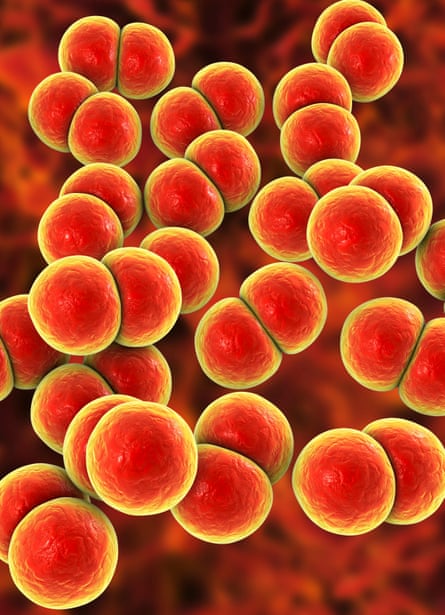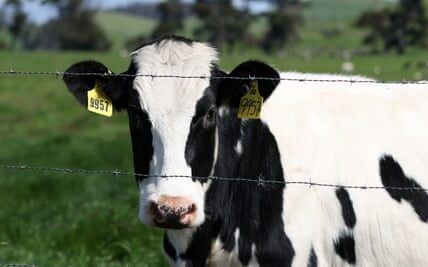A
Recent calculations suggest that Covid-19 could be the cause of over 18 million fatalities globally. Despite the destructive impact of infectious illnesses on humanity, it may be inaccurate to assume that they are always detrimental to our survival and prosperity as a species. After all, if that were the case, why do ancient diseases like malaria (specifically the falciparum strain), cholera, typhoid, measles, and influenza A continue to exist as exclusively human ailments? And why have we not developed immunity against them through evolution?
For many years, professors Ajit and Nissi Varki, along with their colleagues at the University of California, San Diego, have been exploring a question: what is the significance of the intricate sugar structures, known as glycans, found on the surface of cells? They believe that the answer lies in the sugar molecules called sialic acids, which are present at the ends of these chains. These terminal sugar chains play a crucial role in various biological processes, such as regulating immune responses and potentially contributing to human evolution by enhancing endurance during activities like hunting.

In the early 1980s, Ajit Varki developed a fascination with glycobiology and sialic acids after treating a patient who had an adverse immune reaction to a therapeutic horse serum used for treating anaemia. Instead of the immune response being triggered by foreign proteins as commonly believed, Varki found that it was due to the presence of sialic acids on the horse proteins. This was unexpected because sialic acids are naturally produced by all vertebrates, including humans.
He became more intrigued by sialic acids after uncovering, with his colleague Prof Pascal Gagneux, that our ancient predecessors lost a specific type of sialic acid with an extra oxygen atom, called Neu5Gc, from their genetic makeup approximately 3 million years ago, prior to the appearance of the early human species Homo erectus. As a result, descendants of Homo erectus, including our own species Homo sapiens, are unable to produce Neu5Gc and have an abundance of another type of sialic acid, known as Neu5Ac, which most mammals can convert to Neu5Gc.
In 2009, Gagneux and Varki’s publication in the Proceedings of the National Academy of Sciences caught the attention of experts in the field of animal and human medicine. However, with the emergence of the Covid pandemic, their findings have become even more significant as multiple studies have demonstrated a potential link between these sugar caps and the effects of Covid-19. These studies propose that Neu5Ac may facilitate the binding of the Sars-CoV-2 spike protein to animal cells, indicating its potential involvement in the development and severity of the disease in vulnerable animals, including ferrets, minks, and humans.
Our incapacity to generate Neu5Gc, along with a rise in the production of Neu5Ac, may also contribute to our vulnerability to other diseases believed to be exclusive to humans, such as typhoid and cholera, as well as sexually transmitted infections like chlamydia, syphilis, and gonorrhea.
Varki explains that for these particular illnesses, the pathogen has adapted to mimic the human form of sialic acid, making it appear harmless like a wolf in sheep’s clothing.
Varki and Gagneux’s study is particularly fascinating because it highlights the Neu5Gc-eliminating mutation as the initial known biochemical distinction between humans and chimpanzees. Despite sharing 95% of our DNA, this mutation occurred prior to the emergence of Homo erectus, the first species to possess a large brain and utilize tools. This suggests that it could have influenced the development of our own species, Homo sapiens, in our evolutionary past.
The research also suggests that our predecessors lived without malaria until about 10,000 years ago when the neolithic change occurred. This change involved a shift from being nomadic to living an agrarian lifestyle. It is believed that during this time, the parasite Plasmodium falciparum, which is responsible for the most deadly type of human malaria, mutated to target Neu5Ac, a substance found in high quantities on human cells. The development of agriculture may have made humans more susceptible to malaria as stagnant pools near settlements provided breeding grounds for mosquitoes carrying the disease.
Dr. Robert de Vries, a virologist at the University of Utrecht, explains that the study of sialic acids is particularly intriguing because it fills in a crucial missing piece in understanding how parasites evolved to thrive in humans. He commends Ajit for his groundbreaking research and recognizes him as one of the pioneers in the field of sialic acid biology.
In 2008, Varki established an informal think tank called the Center for Academic Research and Training in Anthropogeny (Carta) to explore unique human characteristics that differentiate us from our closest primate ancestors. Anthropogeny focuses on the origins and evolution of human societies and cultures.
Carta holds annual gatherings where experts in primatology, anthropology, paleontology, linguistics, and molecular and evolutionary biology come together to present their studies. Previous discussions have covered topics such as the chimpanzee genome, the evolution of bipedalism, and human storytelling.
According to Gagneux, who is an evolutionary biologist and anthropologist, humans are a paradoxical species. We walk on two legs, have no fur, possess a large brain, and have long been the dominant species in terms of using tools, fire, and language. Yet, we still struggle to comprehend our own nature.

Infectious disease is just one strand of Varki and Gagneux’s research. They believe that the binding of these sugars on the surface of our cells by receptors on immune and other cells may also be involved in several biological processes that have undergone uniquely human evolution, including cancers linked to the consumption of red meat.
Cattle, pigs, and sheep are high in Neu5Gc, and when humans consume this sugar molecule from animals, it becomes a part of our body tissues. Although our bodies can use this sugar molecule efficiently, our immune system sees it as foreign and targets tissues that contain it, causing inflammation and increasing the chances of developing cancer. This does not mean that carcinogens from cooking red meat do not contribute to bowel cancer. However, the unique aspect of the Neu5Gc process is that the sialic acid becomes a permanent part of our cells.
According to Varki, this is the initial instance we are aware of where something foreign becomes fully integrated into you, even though your immune system identifies it.
It is just as intriguing to consider that the accumulation of Neu5Gc from excessive consumption of meat and dairy could potentially be connected to instances of human infertility.
Nonetheless, Varki and Gagneux argue that biology is not the sole determining factor in shaping who we are. Through their research on human origins, they have discovered that our cultural heritage plays an equally significant role in shaping our identities, alongside genes and biology. Gagneux explains, “While sialic acids shed light on the impact of infectious diseases on our evolution, they may also have implications for cultural processes unrelated to disease.”
Rewording: The correlation between gonorrhea and the “grandmother effect”.
Scientists have been puzzled for a long time by the occurrence of menopause. According to natural selection, genes that lead to more offspring should be favored, meaning women should continue to be fertile for their entire lives. However, women typically live well beyond their reproductive years.
This interesting occurrence is primarily seen in humans, as it has only been observed in toothed whales like orcas and chimpanzees living in a distant part of Uganda, who also have extended lifespans after menopause.
Biologists use the term “the grandmother effect” to describe how grandmothers play a role in the survival of the species by taking care of their female relatives’ offspring during menopause.
Nonetheless, grandmothers may not be capable caregivers if they are prone to losing custody of children due to conditions that impact memory, such as Alzheimer’s.

Sialic acids play a crucial role in this discovery. In a study published in 2022, Ajit Varki and Pascal Gagneux determined that humans have a variant of the CD33 gene receptor, responsible for binding to sugars, on their immune cells. This version has been shown to be beneficial in preventing Alzheimer’s disease.
The CD33 receptors are commonly found on various cells in the body, including microglia in the brain. These microglia are responsible for regulating neuroinflammation and are crucial in removing damaged brain cells and the presence of amyloid plaques, which are linked to Alzheimer’s disease.
Unfortunately, regular CD33 receptors hinder the vital function of microglia by attaching to sialic acids found on cells and plaques, thereby increasing the likelihood of developing dementia.
Luckily, humans have acquired a modified version of CD33 that does not have the ability to bind to sugars. This altered receptor no longer responds to sialic acids found on damaged cells and plaques, which enables microglia to break them down. In fact, having a higher amount of this particular CD33 variation can help protect against developing late-onset Alzheimer’s disease.
This altered version of CD33 is not present in chimpanzees and is also not found in the genetic makeup of Neanderthals or Denisovans, who are our closest relatives in terms of evolution.
Varki states that this implies the intelligence and nurturing of grandparents who were in good health may have been a crucial evolutionary benefit that distinguished us from other early human species. According to Varki, grandmothers hold such significance that we developed genetic mechanisms to safeguard their cognitive abilities.
Interestingly, the defensive version of CD33 may have developed as a defense against gonorrhea. This is due to the fact that the bacteria responsible for gonorrhea use the same sugars that CD33 receptors attach to, effectively deceiving human immune cells and avoiding detection as foreign organisms.
According to Varki and Gagneux, the altered form of CD33 likely evolved as a way for humans to protect against “molecular mimicry” from gonorrhea. This gene variant was then repurposed by the brain to provide advantages against dementia.
Gagneux suggests that CD33 may have been chosen, along with other genes, for its ability to provide a survival advantage against infectious diseases during early stages of life. This gene may have also been later selected for its protective properties against dementia and other age-related illnesses.
Source: theguardian.com

